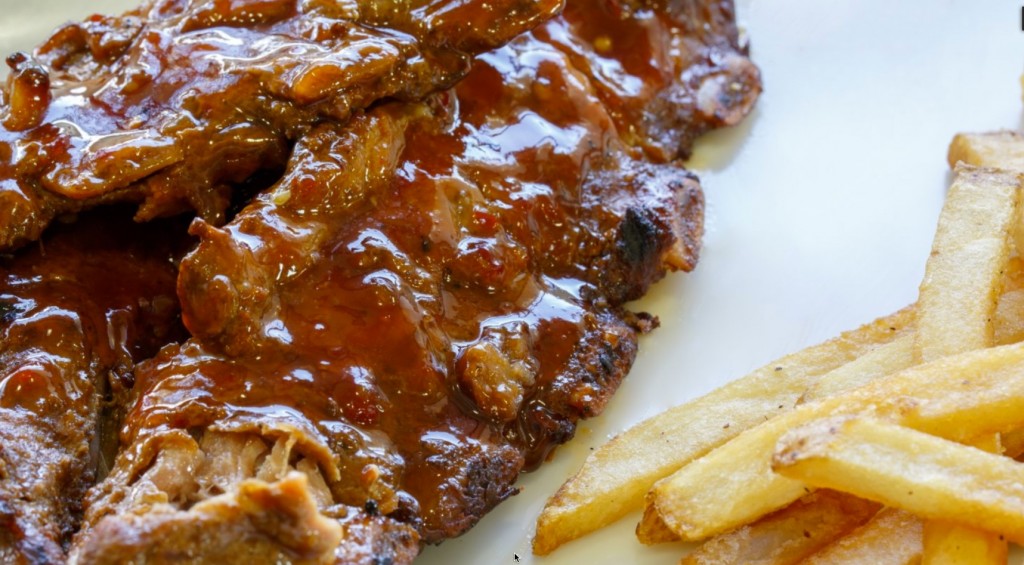I went to dinner with my wife, for my birthday, this afternoon (she had to work at 6pm). I took my new companion, the Tellspec scanner, with me to see what was in my food.
I have myself on a 1300 calorie a day diet, after all.
We will have to chalk this one up to a “birthday splurge,” since the labels do not match reality.
Compared to the official Applebee’s nutrition information, I would say the scan was relatively accurate. Official Applebee’s nutrition chart for a full rack of ribs: 1070 calories (with Honey BBQ sauce). Actual damage for 1/2 rack of ribs = 1300 calories (approximately).
broth with onions, a slice of provolone, and a few bread croutons cost in a diet? 360 calories per the official nutrition guide. Actual damage = 370 calories.
This means, per the Tellspec scanner, my meal cost me 1670 calories (vs. the official guide total of 895).
Now a couple of notes on this final tally:
- I took the official total and divided by 2 to get my value. However, the official Applebee’s guide says 1050 for a full rack, and 490 for a half rack. 1050/2 = 525, so I question the official guide (see notes, below).
- The BBQ sauce on a full rack (per the guide) is 150, and a half rack 80. Still does not add up, but it is closer than the ribs.
- My numbers for the Tellspec scanner are estimates based on scanning the individual components and adding them together. Also note that the Tellspec meat database is not yet complete, so the values I have here are estimations, but are close.
The whole point here is that nutrition labels are not accurate. You need actual scans of the food to get true results. This is based on how nutrition guides and labels are formulated, that the label is not required to include all the ingredients, and the label typically shows information on unprepared food (though it is allowed to be shown “as prepared”). Here are the FDA requirements for labeling.
Now this is personal observation, and not scientific data, but I have seen labels where the food says it has more fiber than carbs. Was the maker careless, or trying to look healthy, or were they under the impression that ‘carbs’ means ‘available carbs?’
How many labels have you seen where the weight of the servings do not add up to the declared weight of the product? There are many labels where the caloric values are much higher or lower than the macronutrients account for. Many foods are labeled with the sum of the ingredients, before cooking, which can make a big difference.
When products are tested by a lab, the food is blended first. This makes the data for a slice of bread an average of all of it, versus the part that may be scanned with the scanner. Other labels are made with no laboratory analysis, by simply entering the ingredient information in a database.
Overall, this means there is a good amount of uncertainty in the labels we are presented with – take them as a guideline, and not absolute fact.
Did I get twice the calories in my meal than expected? I cannot say for sure, but my experience in counting calories from labels and accurate serving sizes tells me I got many more calories than published.
After all, at 1300 calories a day, I should be losing a lot of weight a week, and I actually hold fairly steady.
——-
Special thanks to mARK bLOORE for his discussions on a variety of health topics with me over the past several years. Though he has no control over what I write, he is a good sounding board for my ideas.

